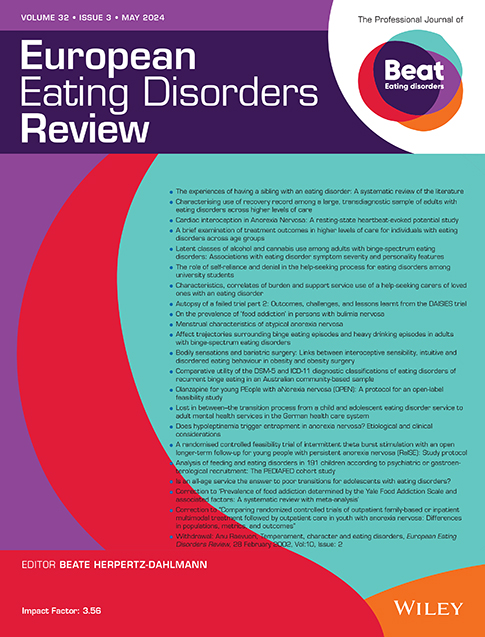Beyond body image: Self-face recognition and negative self-face evaluations in women at high risk for an eating disorder
Abstract
Background
Although one's face represents a core aspect of one's physical appearance, it remains underexplored in eating disorder (ED) populations.
Aims
The current study examined whether self-face recognition accuracy and evaluations differ in those at high (vs. low) ED risk. We also explored whether recognition accuracy and evaluations are related, and whether this relationship is moderated by ED risk status.
Materials & Methods
Participants included 222 women of East/Southeast Asian (61%) and Caucasian (39%) ethnicity, stratified into low-ED-risk (n = 124) and high-ED-risk (n = 98). Participants completed measures of self-face recognition accuracy (difficulty recognizing their face and sensitivity to seeing their facial image) and evaluations (including perceived facial adiposity and attractiveness, and head dissatisfaction).
Results
Partially consistent with hypotheses, regression analyses revealed that participants at high (vs. low) risk showed poorer self-face recognition accuracy (greater difficulty) and more negative self-face evaluations (higher perceived adiposity, lower perceived attractiveness, greater head dissatisfaction). However, ED risk was not significantly associated with self-face recognition sensitivity. Inconsistent with expectations, whilst greater self-face recognition difficulty was associated with more negative self-face evaluations, ED risk failed to moderate such effects.
Discussion & Conclusion
Findings suggest the potential value of considering face and body image disturbances in ED research and interventions. Further research is encouraged.

 求助内容:
求助内容: 应助结果提醒方式:
应助结果提醒方式:


